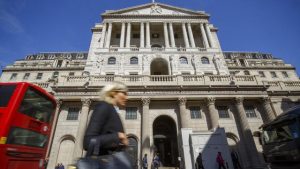Unemployment rates increase dramatically, states ONS
The UK unemployment rate has fallen to 4.9%, the lowest since July 2005, according to official figures.

Need Work
The UK unemployment rate has fallen to 4.9%, the lowest since July 2005, according to official figures.
The unemployment total fell to 1.65 million in the March-to-May period, down 54,000 from the previous quarter, the Office for National Statistics (ONS) said.
According to the BBC and Financial Times, The figures cover the period before the UK vote to leave the European Union.
But some analysts warned the outcome of the vote meant the positive trend was unlikely to continue for much longer.
“The vote to leave the EU will almost certainly now cause some firms to put hiring decisions on hold or cut back headcounts altogether.
“Indeed, we expect the unemployment rate to begin to drift up over the coming quarters. The upshot is that these may be the best set of labour market figures for a while,” said Paul Hollingsworth, UK economist at Capital Economics.
The Bank of England had a similar view in its separate monthly summary of business conditions, which was also released on Wednesday.
It said: “A majority of firms spoken with did not expect a near-term impact from the result on their investment or hiring plans.
“But around a third of contacts thought there would be some negative impact on those plans over the next twelve months.”
“The vote to leave the EU will almost certainly now cause some firms to put hiring decisions on hold or cut back headcounts altogether.
“Indeed, we expect the unemployment rate to begin to drift up over the coming quarters. The upshot is that these may be the best set of labour market figures for a while,” said Paul Hollingsworth, UK economist at Capital Economics.
The Bank of England had a similar view in its separate monthly summary of business conditions, which was also released on Wednesday.
It said: “A majority of firms spoken with did not expect a near-term impact from the result on their investment or hiring plans.
“But around a third of contacts thought there would be some negative impact on those plans over the next twelve months.”
‘Continued to strengthen’
In the March-to-May period, the number of people in work rose by 176,000, with the employment rate remaining at a record high of 74.4%.
Earnings, not adjusted for inflation and excluding bonuses, rose by 2.2% compared with last year.
There were 23.19 million people working full-time, 401,000 more than for a year earlier.
“The labour market continued to strengthen in spring 2016, with record employment and the unemployment rate at its lowest since 2005,” said ONS statistician Nick Palmer.
The inactivity rate, the proportion of people of working age considered economically inactive, was the lowest since comparable records began in 1971 at 21.6%.









